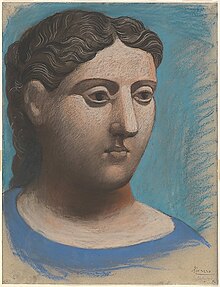Return to order

The return to order (French: retour à l'ordre) was a European art movement that followed the First World War, rejecting the extreme avant-garde art of the years up to 1918 and taking its inspiration from traditional art instead. The movement was a reaction to the war. Cubism was partially abandoned even by its co-creator Picasso. Futurism, which had praised machinery, dynamism, violence and war, was rejected by most of its adherents. The return to order was associated with a revival of classicism and realistic painting.
This change of direction was reflected and encouraged by the magazine Valori plastici published in Italian and French from 1918 to 1922. The term return to order to describe this renewed interest in tradition is said to derive from Le rappel a l'ordre, a book of essays by the poet and artist Jean Cocteau published in 1926.
See also[]
References[]
- 20th century in art
- Neoclassical movements
- Art movement stubs